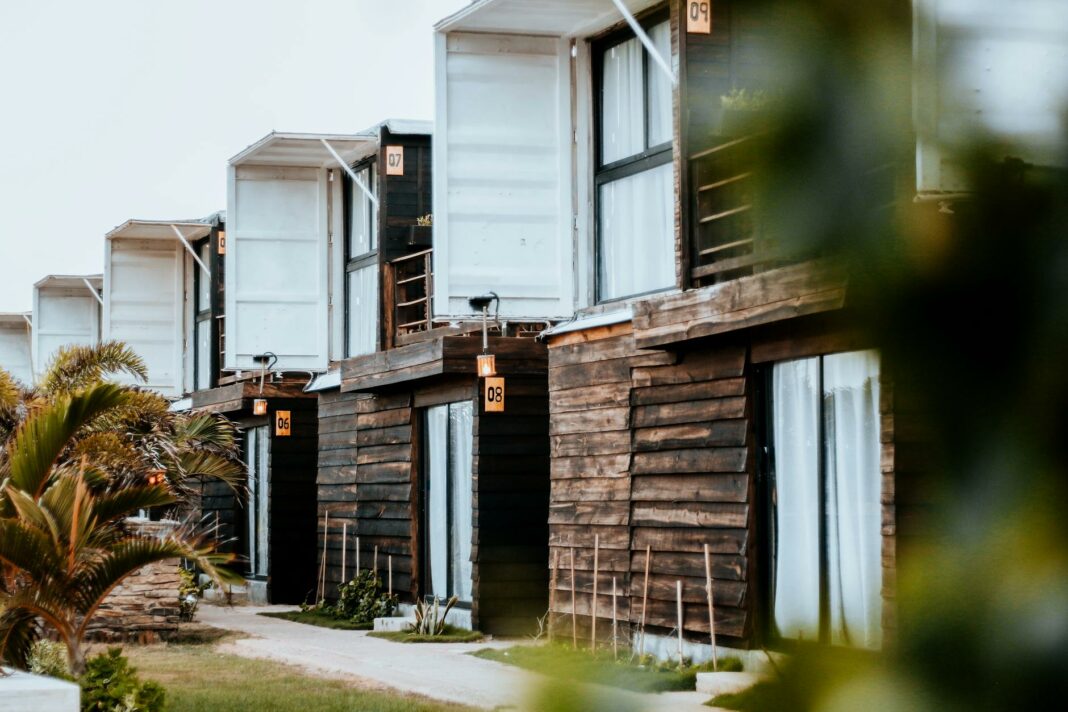Golf enthusiasts often speak of their dream getaways as idyllic escapes where they can enjoy the sun, lush green fairways, and breathtaking landscapes. However, beneath the surface lies a reality that many fail to consider—could your beloved golf retreat be taking a toll on the planet? This blog post dives into the environmental implications of golf tourism, exploring how your perfect vacation might be contributing to the degradation of nature while also offering insights on sustainable alternatives that can elevate your experience without compromising the Earth.
With the growing awareness of global environmental issues, it is crucial to reevaluate our travel choices. Understanding the intricate balance between enjoying leisure activities like golf and protecting the planet can lead us to make more informed decisions. Join us as we navigate the complexities of golf getaways, uncovering both the hidden costs and potential wins for Mother Earth.
Table of Contents
- The Impact on Nature
- Heavy Resource Consumption
- The Role of Chemicals
- Water: The Unsung Hero
- Embracing Sustainability
- The Future of Golf Tourism
- Eco-Conscious Choices for Golfers
- Elevate Your Experience
- Frequently Asked Questions
The Impact on Nature
Golf courses can take up massive tracts of land, creating valuable habitats for countless species of flora and fauna. However, the transformation of natural landscapes into manicured greens often disrupts ecosystems and local wildlife. It is essential to recognize that while these courses may create an aesthetic appeal for players, the underlying environmental costs can be considerable. Properties cleared for golf often strip away native vegetation, thereby eliminating habitats for birds, insects, and other wildlife.
Furthermore, the maintenance of these pristine courses frequently leads to soil erosion and runoff that can negatively affect nearby waterways. It becomes evident that the joy derived from a beautiful golf course comes at a price—a disruption of the delicate ecosystems that once thrived in those areas. This creates a compelling argument for golfers to consider the ecological footprints their beloved sport casts.
Heavy Resource Consumption
The creation and upkeep of golf courses demand a significant amount of resources, particularly land, water, and energy. From the expansive stretches of manicured grass to the technology used in irrigation systems, the environmental toll is often overlooked. Each course utilizes ample fertilizers, pesticides, and other products that not only require resources for their production but also contribute to environmental degradation upon their application.
Additionally, the energy consumption associated with maintaining these environments—think of mowing, watering, and overall upkeep—can be staggering. When traveling to golf resorts, the carbon footprint increases further through transportation and lodging that may not prioritize sustainability. Thus, awareness regarding the resources consumed in golf should drive conscious decisions about our vacation escapes, making room for improvements in resource management within the industry.
The Role of Chemicals
To keep golf courses looking flawless, numerous chemicals are applied throughout the year. This includes herbicides, fungicides, and fertilizers, which serve to maintain that drool-worthy green hue but can also have unexpected consequences. The runoff from these chemicals can seep into nearby rivers, lakes, and coastal areas, causing harm to aquatic life and reducing the quality of local water sources.
Moreover, prolonged exposure to these chemicals poses potential health risks for both golf visitors and course maintenance staff. In light of growing concerns over chemical use, many golf facilities are now exploring organic and sustainable maintenance practices. By adopting these methods, courses can not only enhance the playing experience but also mitigate their negative impact on surrounding communities and ecosystems.
Water: The Unsung Hero
Water is a critical component for keeping golf courses thriving. However, in regions experiencing drought or where water scarcity is an issue, the amount of water needed for upkeep raises eyebrows. Golf courses can consume millions of gallons of water annually, potentially straining local supplies and driving up costs for surrounding communities.
<pIn the context of climate change, the need for sustainable management of this precious resource becomes paramount. Golf courses that invest in innovative irrigation technologies and employ drought-resistant grass varieties can significantly reduce their water consumption while still providing an enjoyable experience. By promoting these practices, courses set an example for responsible water management—an essential shift in today’s climate-conscious world.
Embracing Sustainability
So, where can golfers turn to make a difference? The answer lies in prioritizing sustainability in golf tourism. Opting for eco-friendly resorts and courses that practice responsible land management can ensure environmentally conscious choices are made. More venues are starting to employ native plants, reduce water use, and adopt organic maintenance practices.
Moreover, many communities around the world are redesigning golf courses to blend in seamlessly with the natural landscape, creating a habitat for local wildlife while still offering an exceptional golfing experience. By choosing destinations that champion sustainability, golfers can enjoy their passion while supporting efforts to protect the environment.
The Future of Golf Tourism
With shifting consumer expectations and increasing awareness around environmental issues, the future of golf tourism is beginning to change shape. Golfers now have access to courses that align with their values, allowing them to enjoy their sport without guilt. Forward-thinking clubs are integrating eco-friendly practices into their offerings, from renewable energy sources to wildlife conservation measures.
As the market adapts, this evolution represents a remarkable opportunity for golfers to uncover new, responsible ways to enjoy their sport. Embracing sustainable models not only benefits the environment but can also enhance the overall golfing experience by creating diverse landscapes teeming with life. More than ever, the path forward is one that welcomes golf enthusiasts as stewards of the planet.
Eco-Conscious Choices for Golfers
As a golfer, you possess the power to make conscious choices that contribute positively to the environment. Selecting golf attire made from sustainable materials, bringing reusable water bottles instead of relying on single-use plastics, and opting for local accommodations can significantly affect your carbon footprint during your travels. Additionally, advocating for and supporting courses that prioritize sustainability is another way to vote with your dollars.
When packing for your trip, consider including eco-friendly golfing gear that minimizes environmental impact. From biodegradable golf tees to golf balls made from sustainable materials, each small choice contributes to a larger movement towards environmental stewardship. Armed with this knowledge, golfers can fully enjoy their getaways while protecting the planet.
Elevate Your Experience
By integrating sustainable practices and making conscious decisions, golfers can elevate their experiences while positively impacting the environment. Sustainable golf courses often foster a joyful connection with nature that enhances the overall enjoyment of the game. Imagine teeing off amidst a vibrant ecosystem where the chorus of birds and the rustle of leaves provide the perfect soundtrack, creating an unforgettable experience that transcends the typical golfing getaway.
Additionally, immersing yourself in the natural beauty around you promotes mindfulness and relaxation, transforming a simple day on the green into a profound experience. When golfers prioritize sustainability, they not only play the game they love, but they also become advocates for change, ensuring that future generations can enjoy the same beautiful escapes we cherish today.
Transformative Thoughts on Your Golf Getaway
The hidden consequences of golf tourism reveal the profound impact our choices have on the planet. Recognizing the intricate relationship between our leisure activities and the environment allows us to challenge traditional approaches that may harm rather than sustain the Earth. By embracing sustainable options and making eco-conscious decisions, golfers can enjoy their favorite pastime while also becoming vital players in the ongoing quest for environmental stewardship.
Frequently Asked Questions
1. How do I find sustainable golf courses?
Look for courses that are certified as environmentally friendly or those that actively implement sustainable practices in their maintenance and operations.
2. What can I do to reduce my environmental impact while golfing?
Consider using biodegradable golf products, minimizing waste, carpooling to the course, and supporting eco-friendly accommodations.
3. Are there any negative health effects from chemicals used on golf courses?
Yes, the chemicals used can pose health risks for both workers and golfers if proper safety measures are not taken. Always investigate the practices of the course you are visiting.
4. Can I enjoy a luxury golf experience while being environmentally conscious?
Absolutely! Many luxury resorts now prioritize sustainability, offering high-end experiences that also respect and protect natural resources.
5. What role does water conservation play in golf sustainability?
Water conservation is crucial, as golf courses typically require substantial amounts of water. Sustainable practices help to reduce consumption and protect local water supplies.
Image Credit: Pexels





